original approach communities take when presenting themselves to the world.
This is the kind of suspense I live for -- a bolt from the blue
reminder that deep travel offers so much more than the
same-old-same-old snooze-fest of someone else's idea of fun.
Surprise and sheer wonder is just the tip of the iceberg in Narbonne, a
homey small city nestled in the beautiful Corbières wine region of Languedoc.
Built by Rome in 118 BC, Narbonne's bits and pieces of antiquity make for
a fascinating day or two of discovery that you won't soon forget.
Just enough marvels and cheerful character to keep you smiling.
Narbonne's charm is greater than its beauty.
I think this small city of about 50,000 is unfairly overlooked by
travelers because it doesn't have that postcard perfect
look that many villages in the south of France command.
But don't worry, it more than makes up for that with a body
of fascinating landmarks to match its warm and inviting community spirit.
Narbonne was built as a trading post along Rome's prized Via Domitia. Astonishingly, still today you can stand on the very same road
Caesar's top brass paraded across in the town's central core.
Back in the day, Narbonne was wealthy and powerful,
a coastal city that prospered in large part due to its seaport.
Even after the Romans left, this favored locale
was long admired for its wealth and prestige.
But over time, changing climate conditions and perhaps some bad karma
caused its harbor to silt up, resulting in disastrous afteraffects
for the once thriving Mediterranean merchant port.
Their bad luck -- add in the plague as well -- is our good fortune since this once
mighty Roman colony is now the perfect setting to explore the
intriguing legacy of Narbonne's stretch as France's golden city in the sun.
For my money, The Horreum (terrible word, wonderful place)
is the best Roman remnant in Narbonne.
Though many guidebooks glide over it, it's a place of great fun.
You're guided through an underground grain store -- a virtual little chamber of horrors if you're claustrophobic -- past wonderful carvings of bulls, horses,
chariots, and more -- steered by a knowledgeable guide.
Our expert pointed out (in french) why the ancient pottery had different shapes--
thin, breathable earthenware for wine and flat bottomed vessels for olive oil.
It was my first ever tour by flashlight.
And though I wouldn't want to go looking down just any old dark
alleyway in Narbonne, it was a real pleasure and a lovely surprise
to make our illuminated pilgrimage deep in the bowels of The Horreum.
And this one didn't disappoint -- as a matter of fact, Les Halles is exceptional.
Animated, colorful, traditional, this pavilion has been rocking Narbonne since 1901. The wrought iron and sculpted stone facade is gorgeous,
a preview perhaps of the glories inside.
Here you'll discover another world of tempting delicacies -- fish and seafood of
every type, a city filled with meat & charcuterie -- beautiful & mysterious to the uninitiated -- and an assortment of fruits & vegetables that scream FRESH -- all
beautifully laid out to tickle your imagination as well as your appetite.
You'll marvel at the big picture but stay to admire the minutiae of the assortment,
realizing how near you are to Carcassonne (cassoulet!) and french Catalan (tapas!). And don't leave without sampling some of the local Corbières wine.
The customers and stall owners are cheerful and who can blame them.
Surrounded by dazzling flowers and exotic spices, this is a virtual
Disney World for locally sourced products.
If you've never heard of this lovely canal, you're not alone.
Just 23 miles in length, the petite canal is overshadowed by its more famous sister,
the Canal du Midi, together an acclaimed UNESCO World Heritage Site.
It's a beautiful place, reason enough to make a stop here.
The market is canal side and the rest of the city's riches easily reached by foot.
With 2500 years of culture, the city's small core offers a day of easy entertainment.
Narbonne's Archeology Museum contain reminders of its impressive past.
Mosaics, statues, sarcophagi (decorated stone coffins) and
a wooden anchor recall the town's historically seaworthy yesteryear.
Frescoes from a Gallo-Roman village are shown to great advantage
in their new 12th century home, the Palais Vieux.
The Art & History Museum is located in the 17th century
archbishop's apartments inside the Palais Neuf.
Best known for its important collection of orientalist painting
and faience, it's worth a look.
I had to ask Professor Google exactly what orientalist painting was
because it's not (as you would think) works by Asian artists.
Orientalist is a style of painting from the 19th century, done by
western artists moved by exotic and sensual oriental influences
and popularized when Napoleon invaded Egypt.
Housed in a former church, the Musée Lapidaire is a perfect
quick stop to get stoned -- just kidding...
We're talking grave stones here, as well as some
fine remains from a 13th century Benedictine monastery.
The 1300 massive blocks of stone are curiously decorated -- much
more interesting than they sound -- making up
one of the largest collections in all of Europe.
The Cathedrale St-Just-et-St-Pasteur is an enormous must-see Gothic construction. Although its gloriously tall interior contains some beautiful 14th-century stained glass, Aubusson tapestries and fantastic tombs, it's best known for being
two-thirds unfinished, a strange sight and utter surprise.
Building began in 1272 when Narbonne was still powerful and wealthy but all manner of hell broke loose as the city's fortunes eventually dwindled.
Add to that the unhappy fact that a section of the city wall required rebuilding
in order to complete the church's original plans and voila -- you have
one of the most interesting "mistakes" in all of France.
The cathedral is so tall, you'll hurt your neck gazing at the
ceilings and church towers, all quite remarkable.
Besides, who doesn't love a Halloween-ready skeleton grinning from a real life tomb?
a magic mixture of romance and mid-century nostalgia.
If you've never heard his most famous tune, "La Mer", please give it
a listen -- newly popular again as "Beyond the sea" in American movie
"Finding Nemo" -- though I'll admit to a special soft spot
for another Trenet favorite "Boum".
Make yourself happy and give him a listen on YouTube.
At the time of our visit, I didn't realize you can visit his childhood home
so now I have a good excuse to return to this lovely city not quite on "La Mer".
The Abbey de Fontfroide is ready-made for a bit of virtuous reflection.
Contrast that with equal parts of unholy covetousness you'll succumb
to for the quiet but stunning countryside.
You're required to take the guided tour but it's all worthwhile
even if you don't normally enjoy that sort of thing.
The 13th century cloister is achingly beautiful and
the austere 12th century church impresses as well.
World War I brought stained glass from ruined churches all around France
now lovingly pieced together in gorgeous abstract designs.
The abbey was founded by the Benedictines, then given over to the
Cistercians who later promoted the whole Albigensian Crusade
nightmare that tore apart much of the region.
Here today, there's love, not war and you'll be glad you stopped to admire
the beautiful roses and cypress trees as you contemplate the monks'
spartan quarters and nature's perfect, Tuscan-like surroundings.
where there are too many good stops to count.
It pays to veer off the beaten path and take a chance
on a town often overlooked by the guidebooks.
Narbonne is one of those places and we're glad we made the effort.
I hope you do too!
"I came, I saw, I conquered."
Julius Casesar
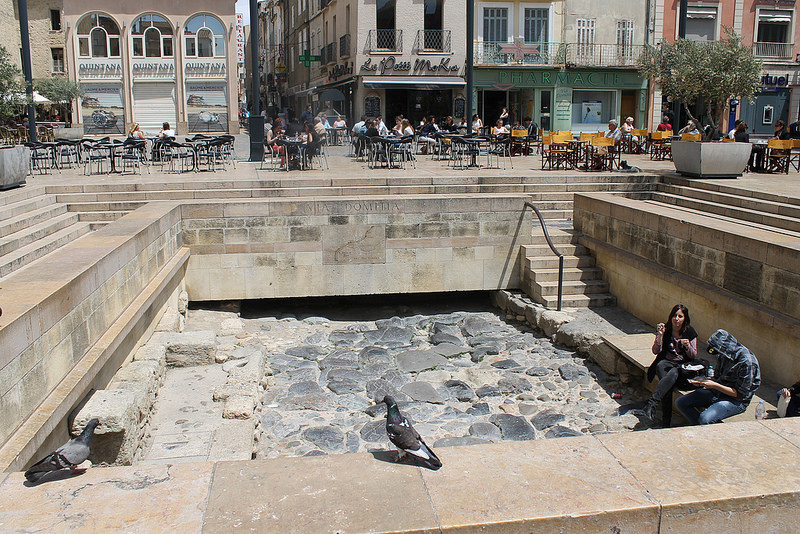

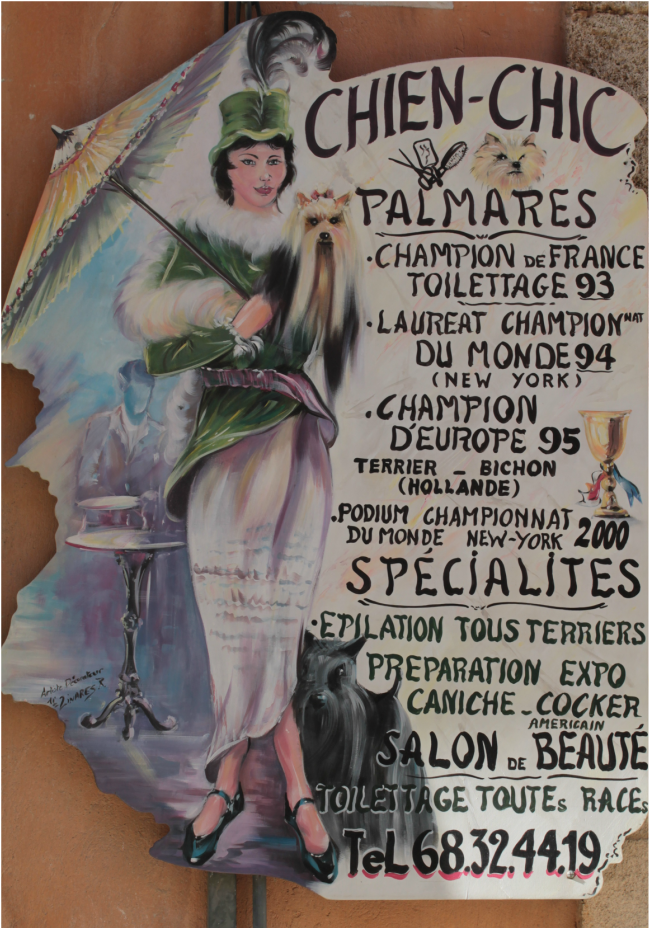
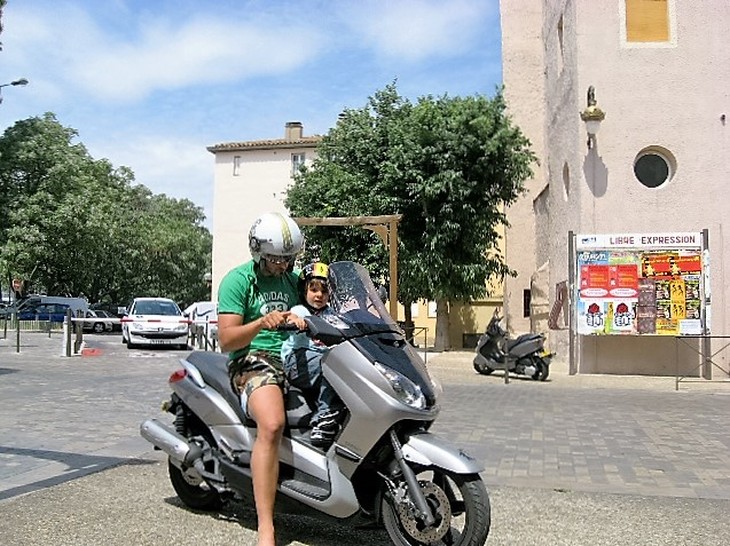
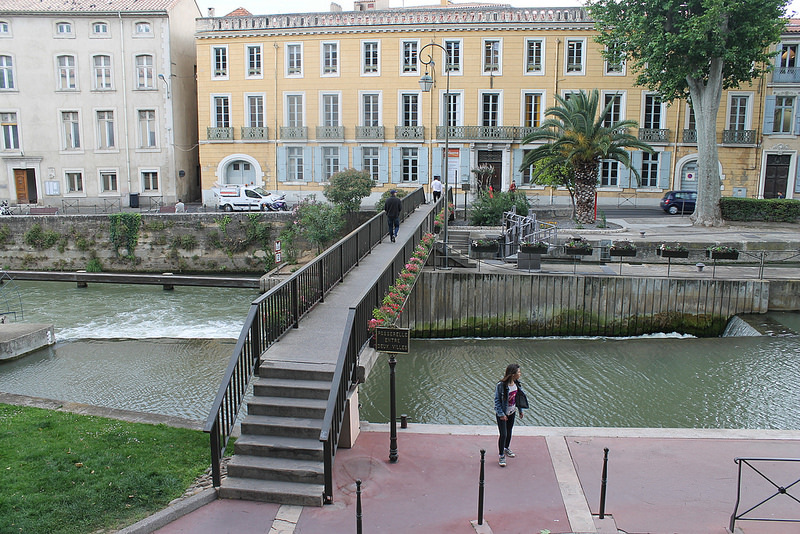






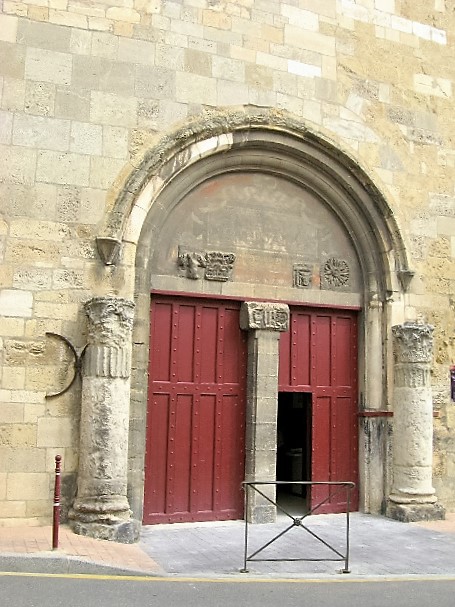

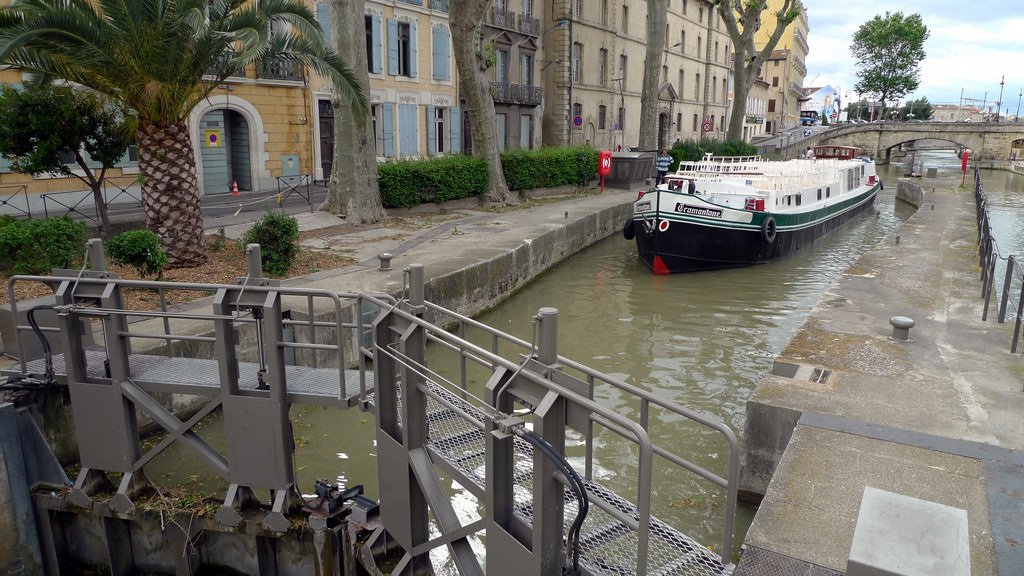
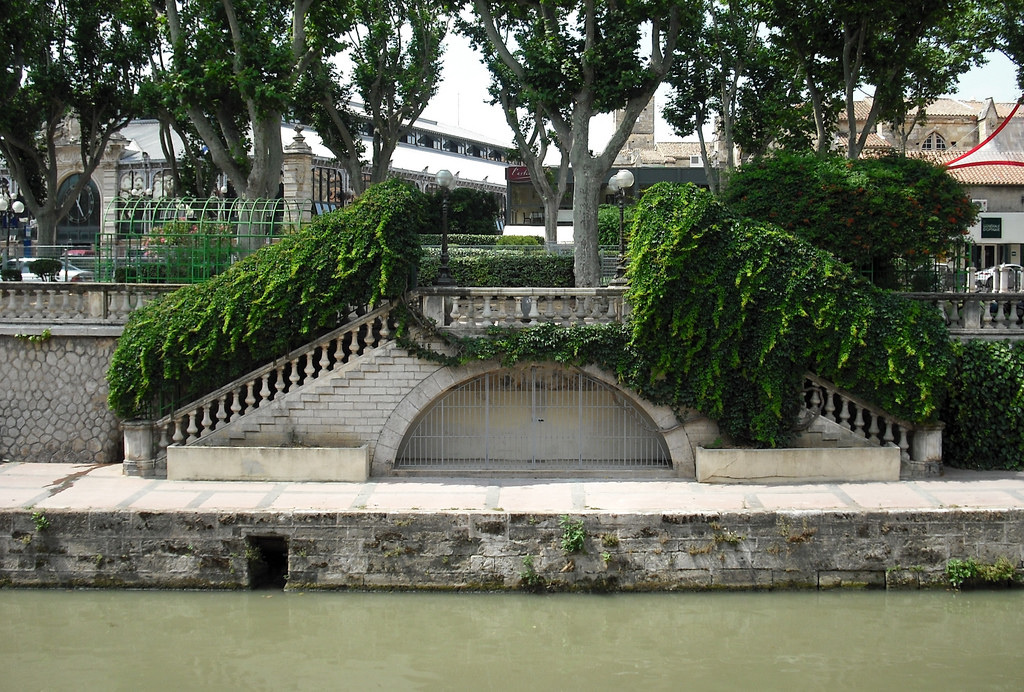
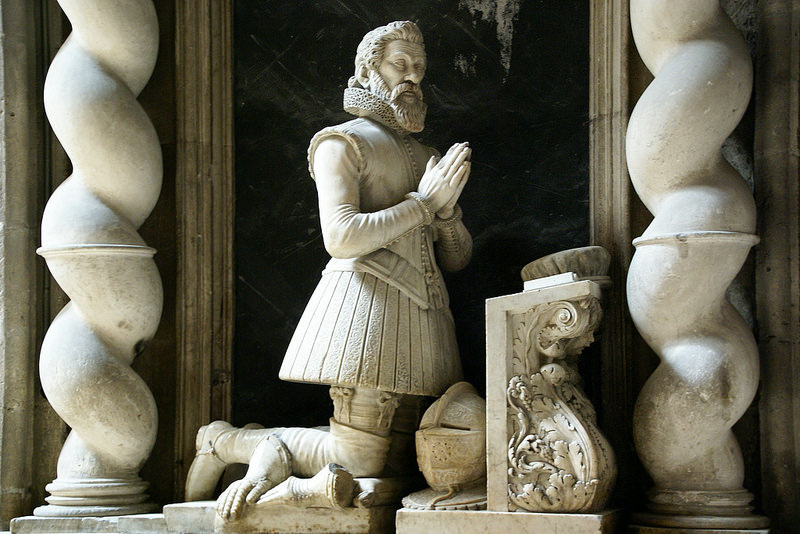
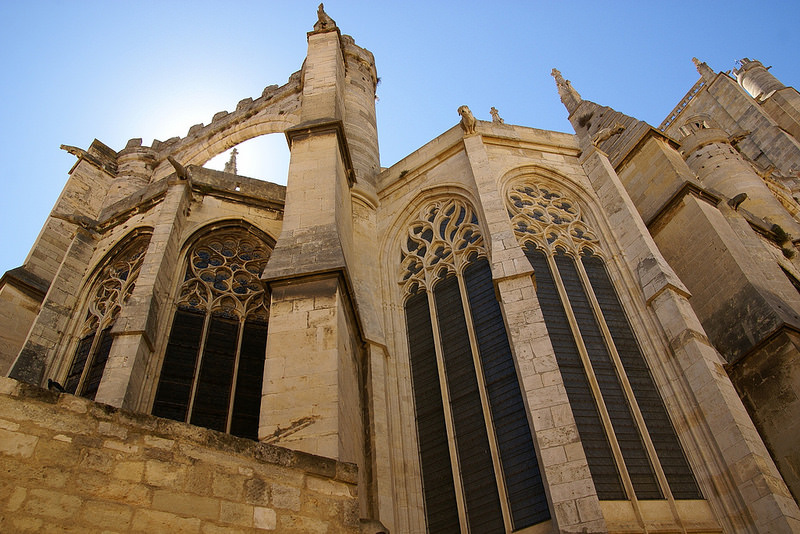
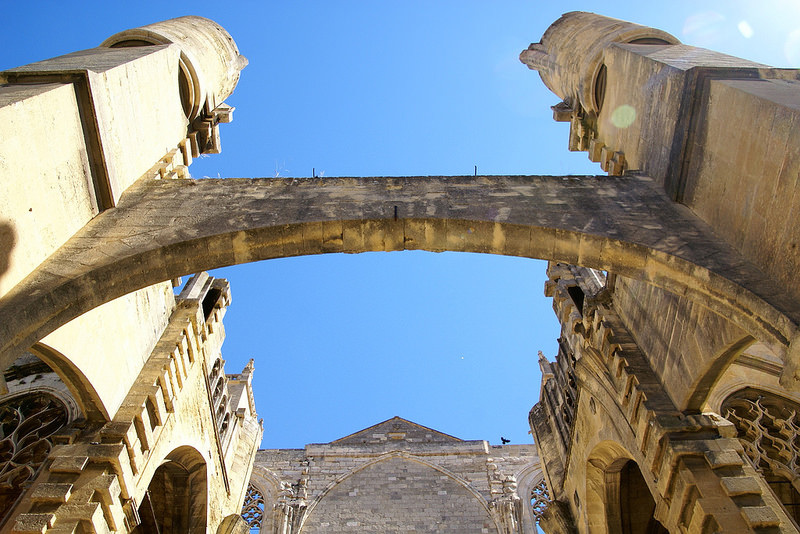


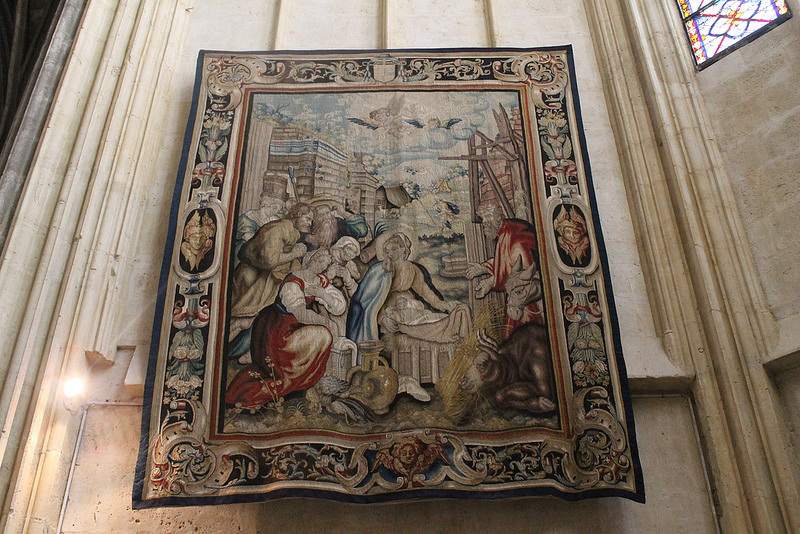
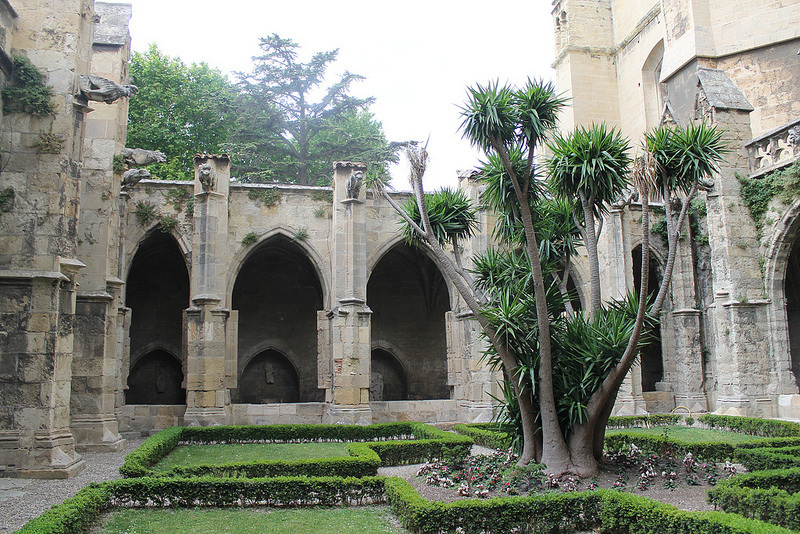

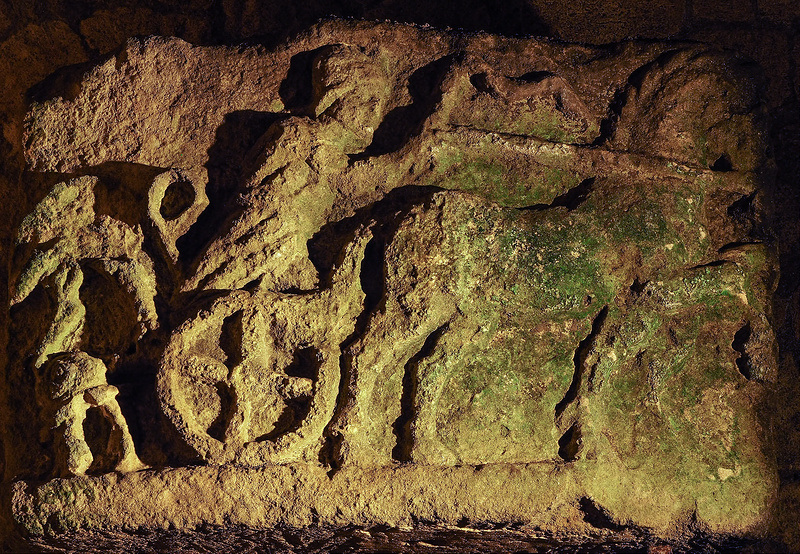

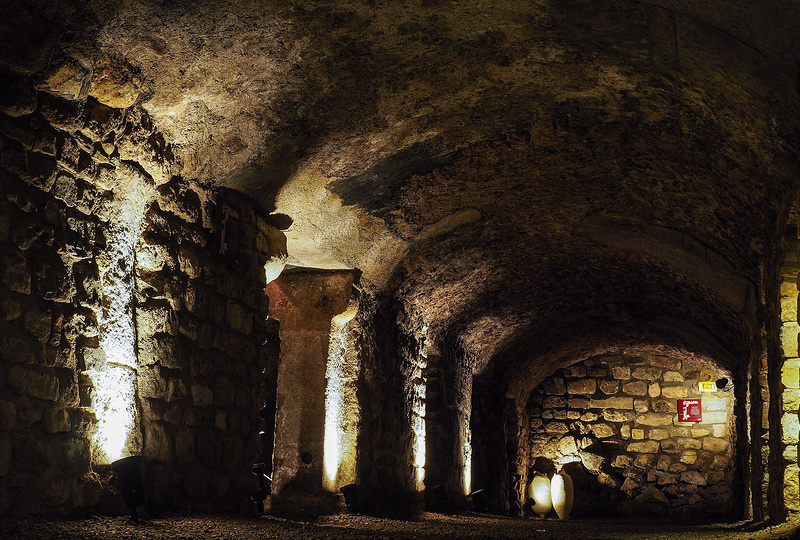

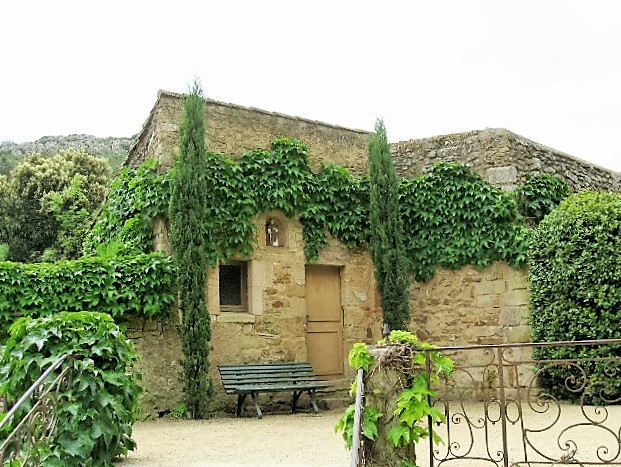

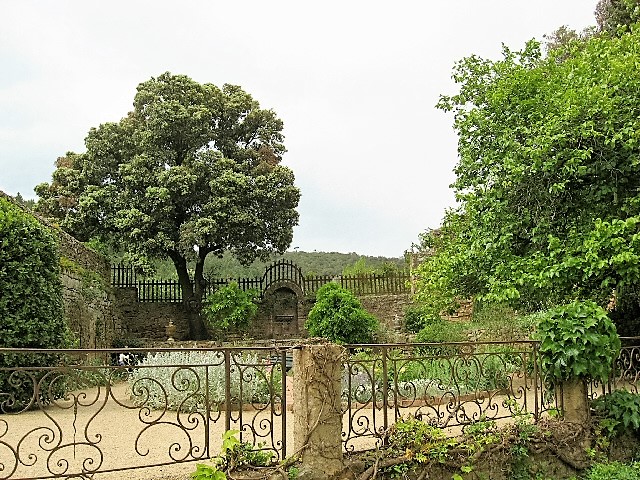
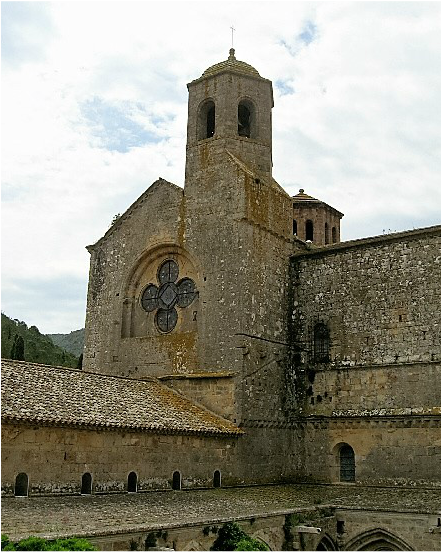
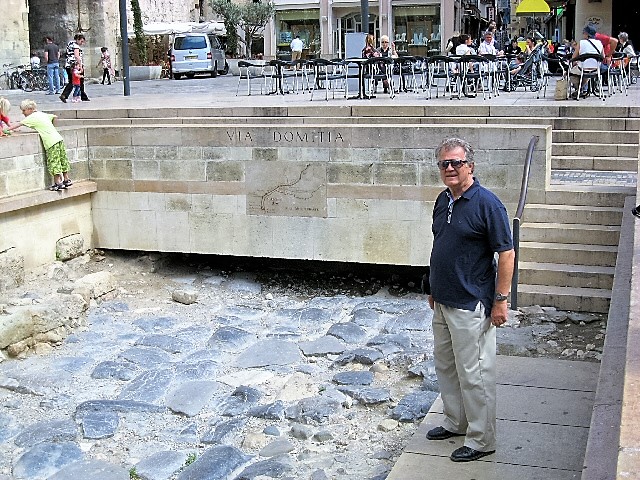

 RSS Feed
RSS Feed
